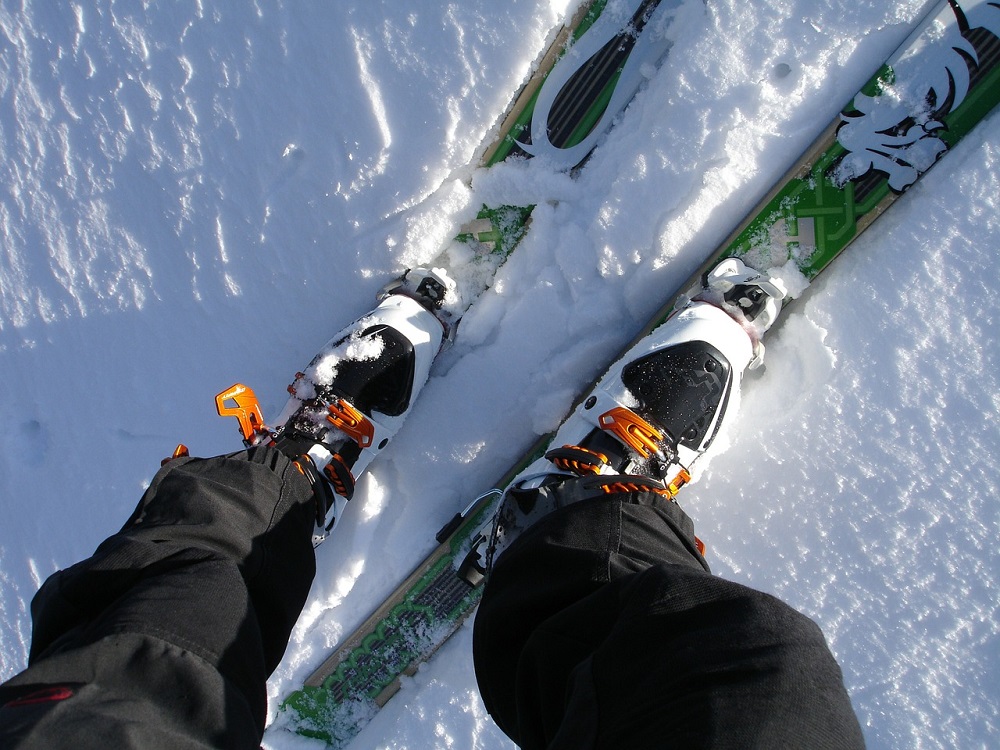Whether you are a professional or a novice skier, Ski boots are going to be the most prioritised investment that you are going to make. Ski boots act as an engine during skiing as it accelerates or stops you on the piste. They are going to be your companions through thick and thin for many years to come, So we have formulated some points to ease your pursuit of Ski boots.
COMPREHENDING THE TERMINOLOGIES:
MONDOPOINT:
In the world of skiing, Mondopoint is the length of your foot in cm. You can easily find your mondo point with the aid of a chart but to remain on the safe side, get your mondo point measured from a shop. But if you are in a hurry then measure the length of your foot from heel to toe, This will give you a vague idea. If your foot is 25cm long then your mondo point is 25.
LAST:
Last refers to the width of the boot. There are two types of the ski boot concerning width i.e Narrow and Wider. A shoe with a width below then 100 mm is termed as narrow while a shoe with width above then 104 mm is termed as Wider. Ski shoes should be as tight as possible to give you a better grip.
FLEX:
Flex, as its name hints, is the measure of the flexibility of the shoe. In simpler words, It is the tendency of the boot to get bent at the ankles. Most of the ski boots are granted a number ranging from 60 to 130. The lower the flex number, the softer the boot will be and vice versa. The stiff boots demand more energy to push the ski than a flexible boot.
An ideal ski boot will be stiff enough to offer more control and support but flexible enough to absorb pressure and provide balance.
Weight also plays an important role in choosing the flex number suitable for you. Women tend to have a smaller flex number as respect to men due to less weight and size.
SKILL LEVEL:
Skiing is a perilous game and overestimation of your skill for even a split-second can subvert you. Different levels of skill demand a different version of boots. If you have just started skiing and you have mastered snowplough then you are a beginner and a beginner should opt for a softer version of boots as it is more forgiving for technical flaws. You are most probably learning basic control at this stage and stiff shoes can punish you severely for even slight negligence.
But if you are a more experienced skier with more control on your skis irrespective of weather conditions and terrain then you are on intermediate or expert level and you should go for relatively stiffer boots as they offer more control.
But make sure you don’t over or underestimate your skill level as former can hurt your body and latter can harm your experience.
SOCKS:
Choosing socks came before even buying the ski shoes because the size of your boot will be measured with your socks on. People usually opt for Thick socks to keep their feet warm but thin socks are more efficient in skiing.
This might come as a shock to you but thin socks offer more warmth then thick ones as the latter restricts the blood flow in your foot by making the boot tighter. Other then that, thin socks also gives you a better grip than their thick counterparts.
FOOTBEDS:
Footbeds are used for cushioning and they also provide a better fit. They are pre-moulded or custom made to nullify any corners or spots that can cause pain or blisters in future.
CUSTOM FITTING:
If you have found a pretty good shoe but it has some narrow and broad spots then you can opt for one of the two options. Either you can give your boot some time in which it can frame itself around your feet or you can contact a boot fitter to have him mould your boot according to your preference by heating it. This can eradicate all the pressure points while snugging your boots too.
ADVANCED FEATURES:
SKI/WALK MODE:
If you hate hiking up the ridge then your next boot must contain this feature. This is usually present in high-end boots and it lets you un-hook to upper shell from the lower one to ease your walking. Once you reach the top, you can hook both the parts back again.
FLEX ADJUSTMENT:
Some ski boots have a built-in feature to adjust the flex. Expert skiers use it to adapt to different terrains like powder, groomers or bumps. This adjustment usually comes in the shape of dial or rivet and is located on the spine of the boot.
CONCLUSION:
At this point, you have comprehended that choosing a ski boot is slightly different than choosing a sneaker. You have to accumulate different things before buying a ski boot and this is what makes it fun. One last piece of advice is that always talk thoroughly with your retailer or boot fitter, don’t hide anything so they can aid you in choosing the best fit for you.
